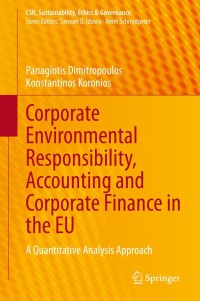


HPQ Fly Fishing Corp. (HPQ) is a private corporation that elects to reports its financial results in accordance with IFRS. The primary shareholder of HPQ is in discussions with another investor to sell part of the company. As part of its due diligence, the potential investor has thoroughly reviewed HPQ's draft financial statements for its year ended December 31, 20X4. She identified the issues that follow: Land held for development: HPQ currently uses the historical cost model to subsequently value its land held for development. The investor notes that the normal practice in the industry is to subsequently value land using the revaluation model. The investor suggests that HPQ's financial results would be more comparable if it adopted the industry standard with respect to the model used to subsequently value land holdings. HPQ paid $1,400,000 for the land. A recent appraisal commissioned by the investor as part of her due diligence indicated the market value of the property was $1,800,000. This is the first appraisal done since the property was purchased seven years ago. Equipment depreciation: HPQ's equipment includes machinery used for fly-tying that requires a high degree of operator involvement. The investor notes that new technology was recently introduced that totally automates the process, and as such, the resale market for HPQ's equipment has collapsed. Moreover, the manufacturer of HPQ's machinery announced that it will cease production of replacement parts on December 31, 20X6. HPQ paid $500,000 to purchase its fly-tying equipment on January 1, 20X0. It has been depreciating the equipment on a straight-line basis over 10 years with an estimated residual value of $100,000. Given the recent developments, the investor suggests that it is more appropriate to change the estimated useful life of the equipment to a total of seven vears and change the estimated residual value to so. Depreciation for the year ended December 31,20X4 has been recorded. Inventory valuation: During her review of HPQ's financial records, the investor noted that while the company valued its inventory at the lower of cost and net realizable value, it did so on the basis of all inventory held by operating segment, rather than individual or similar items. The investor suggests that the inventory valuation be adjusted accordingly. The relevant inventory valuations follow: December 31, 20X3 December 31, 20X4 Lower of cost and NRV by operating segment Lower of cost and NRV by similar items $2,100,000 $2,050,000 $2,400,000 $2,200,000 HPQ uses a perpetual inventory system. Required: Assume that HPQ adopts the new investor's recommendations. Ignore income tax considerations. a) For each of the three situations above, identify the type of change and the proper accounting treatment. b) Prepare journal entries for December 31, 20X4, to properly record the changes described above. HPQ Fly Fishing Corp. (HPQ) is a private corporation that elects to reports its financial results in accordance with IFRS. The primary shareholder of HPQ is in discussions with another investor to sell part of the company. As part of its due diligence, the potential investor has thoroughly reviewed HPQ's draft financial statements for its year ended December 31, 20X4. She identified the issues that follow: Land held for development: HPQ currently uses the historical cost model to subsequently value its land held for development. The investor notes that the normal practice in the industry is to subsequently value land using the revaluation model. The investor suggests that HPQ's financial results would be more comparable if it adopted the industry standard with respect to the model used to subsequently value land holdings. HPQ paid $1,400,000 for the land. A recent appraisal commissioned by the investor as part of her due diligence indicated the market value of the property was $1,800,000. This is the first appraisal done since the property was purchased seven years ago. Equipment depreciation: HPQ's equipment includes machinery used for fly-tying that requires a high degree of operator involvement. The investor notes that new technology was recently introduced that totally automates the process, and as such, the resale market for HPQ's equipment has collapsed. Moreover, the manufacturer of HPQ's machinery announced that it will cease production of replacement parts on December 31, 20X6. HPQ paid $500,000 to purchase its fly-tying equipment on January 1, 20X0. It has been depreciating the equipment on a straight-line basis over 10 years with an estimated residual value of $100,000. Given the recent developments, the investor suggests that it is more appropriate to change the estimated useful life of the equipment to a total of seven vears and change the estimated residual value to so. Depreciation for the year ended December 31,20X4 has been recorded. Inventory valuation: During her review of HPQ's financial records, the investor noted that while the company valued its inventory at the lower of cost and net realizable value, it did so on the basis of all inventory held by operating segment, rather than individual or similar items. The investor suggests that the inventory valuation be adjusted accordingly. The relevant inventory valuations follow: December 31, 20X3 December 31, 20X4 Lower of cost and NRV by operating segment Lower of cost and NRV by similar items $2,100,000 $2,050,000 $2,400,000 $2,200,000 HPQ uses a perpetual inventory system. Required: Assume that HPQ adopts the new investor's recommendations. Ignore income tax considerations. a) For each of the three situations above, identify the type of change and the proper accounting treatment. b) Prepare journal entries for December 31, 20X4, to properly record the changes described above









